Rodents can cause havoc in the garden, leaving unsightly tunnels and hills, munching on crops, and uprooting plants. But with so many different types of rodents, including moles, voles, chipmunks, white-footed mice, and house mice, it’s essential to correctly identify the pest to control it effectively. This article will help you learn the difference between moles and other rodents and how to get rid of moles in the garden.
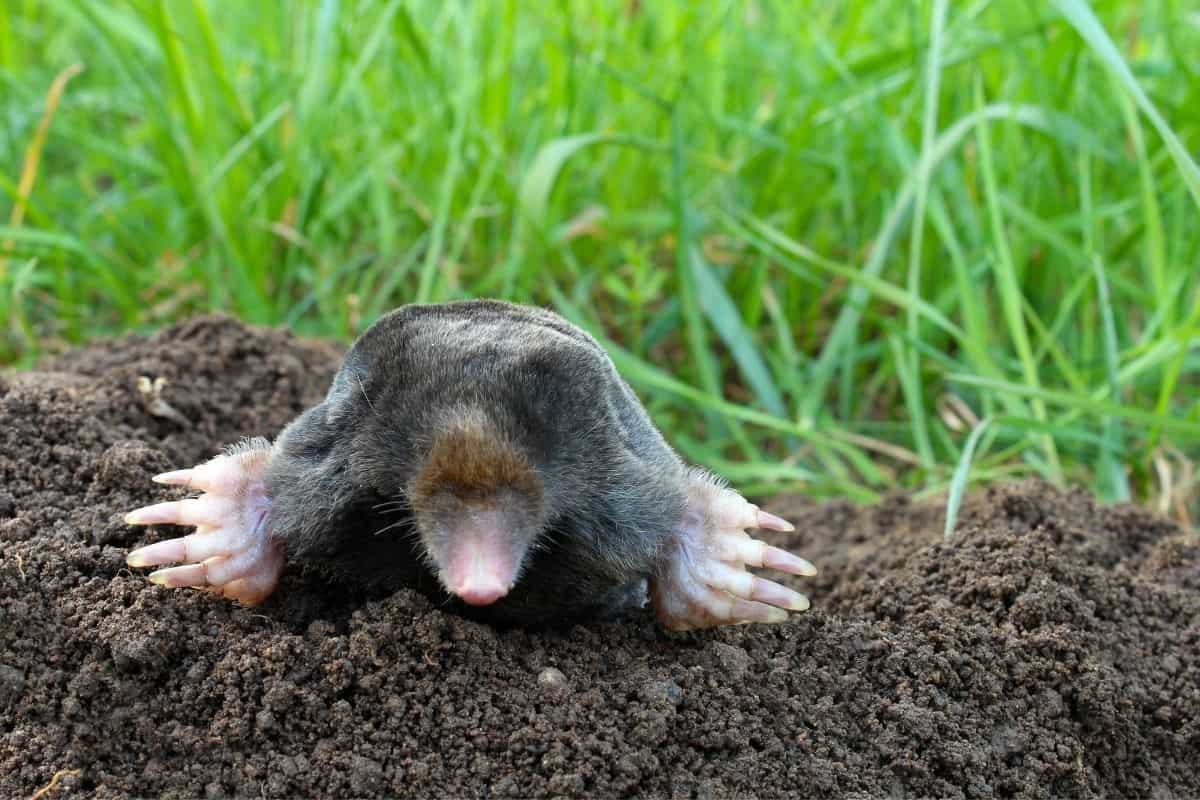
How To Get Rid Of Moles In The Garden
Are rodents digging through your garden? First, we’ll look at proper identification to make sure moles really are the culprits, and then we’ll review some effective natural control methods for reducing or even eliminating mole damage. There are many different types of rodents and other pests that can cause similar damage. Let’s look at how you can identify moles so you’re confident that’s the problem you’re dealing with.
How to identify moles
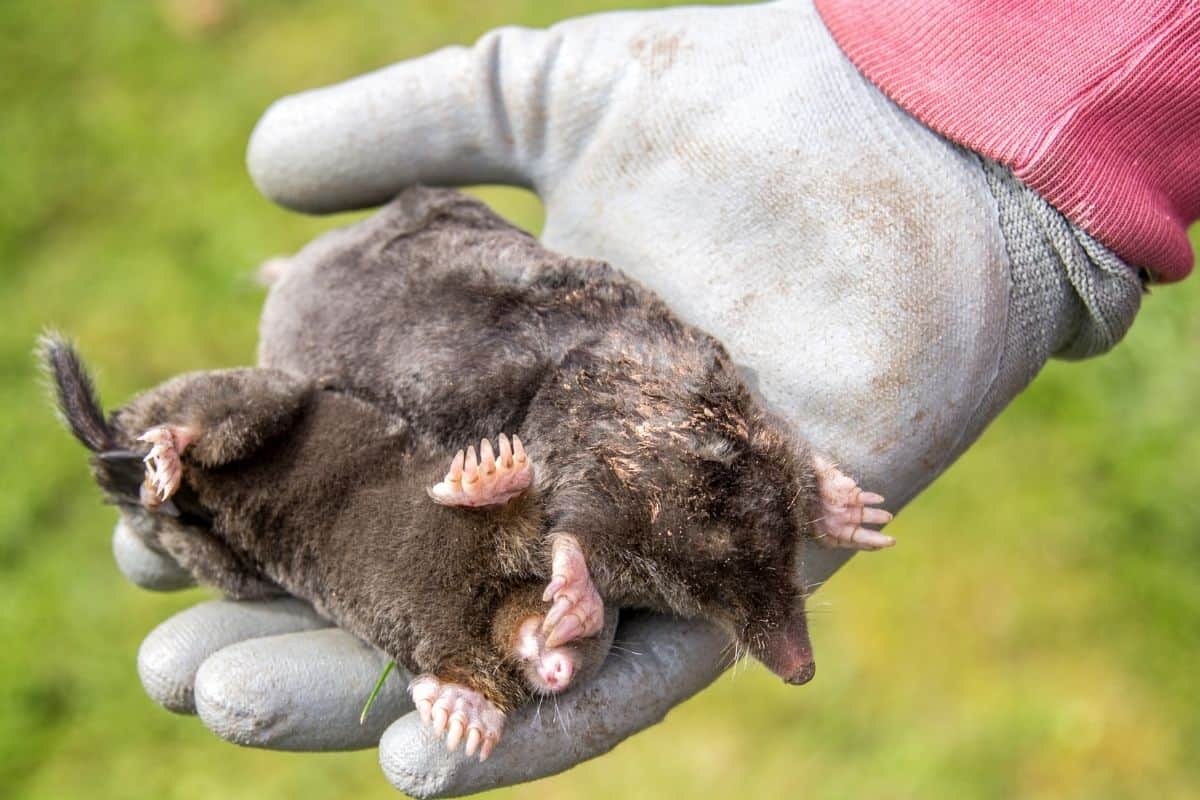
Although there are several species of moles, including the unique star-nosed mole, they all share a few distinctive characteristics. Moles are about five to seven inches long with a hairless, pointed snout. Their short, velvety, brown fur conceals their small eyes and ear openings (they lack external ears). And while moles have tiny, narrow hind feet with sharp, slender claws, one of their most distinguishing characteristics is their large, paddle-like front feet designed for digging.
What mole damage looks like
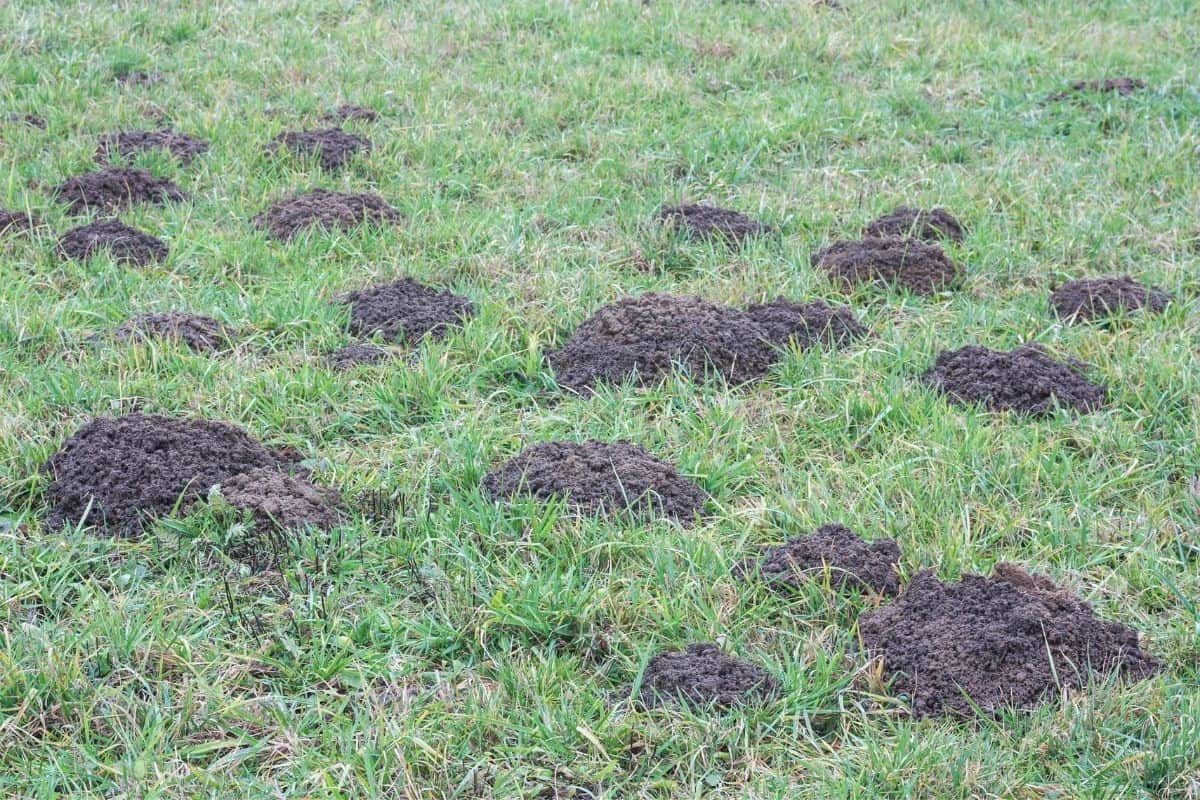
Despite their bad reputation, moles provide benefits to the soil and help control undesirable insects and grubs. When they dig and tunnel, moles aerate the soil and mix it up so that humus can travel deeper into the soil and subsoil material (including nutrients) moves toward the surface and into the reach of plant roots. I bet you didn’t know mole tunnels could be a good thing!
Unfortunately, moles can also cause some damage while burrowing and hunting for dinner. Most mole damage is an indirect result of this tunneling, as moles disrupt roots while moving just under the soil’s surface. Their runways and molehills can result in a bumpy lawn and unsightly brown traces and mounds of soil throughout the yard. Of course, their digging sometimes damages garden plants as well. If you see a mole hole, what can you do?
Gardeners often blame moles for destroying seeds, plants, and bulbs, but moles feed almost exclusively on grubs, worms, and insects, not plant material. However, other rodents – like voles and mice – may use mole runways and eat seeds and tubers as they move through the tunnels. If the damage in your garden seems to have been caused by munching rodents, moles are likely not the culprits.
What do moles eat?
Understanding their food source is also helpful. Their diet typically includes grubs, worms, bugs, beetles, and other insects. Voles, however, eat plant material and can be much more destructive in the garden than moles.
Once you’re positive you’re dealing with moles, what is the best way to eliminate them? We’re only going to talk about humane methods here because I don’t like to use toxins or poisons. They are bad for the environment, for other wildlife, and even for your crops.
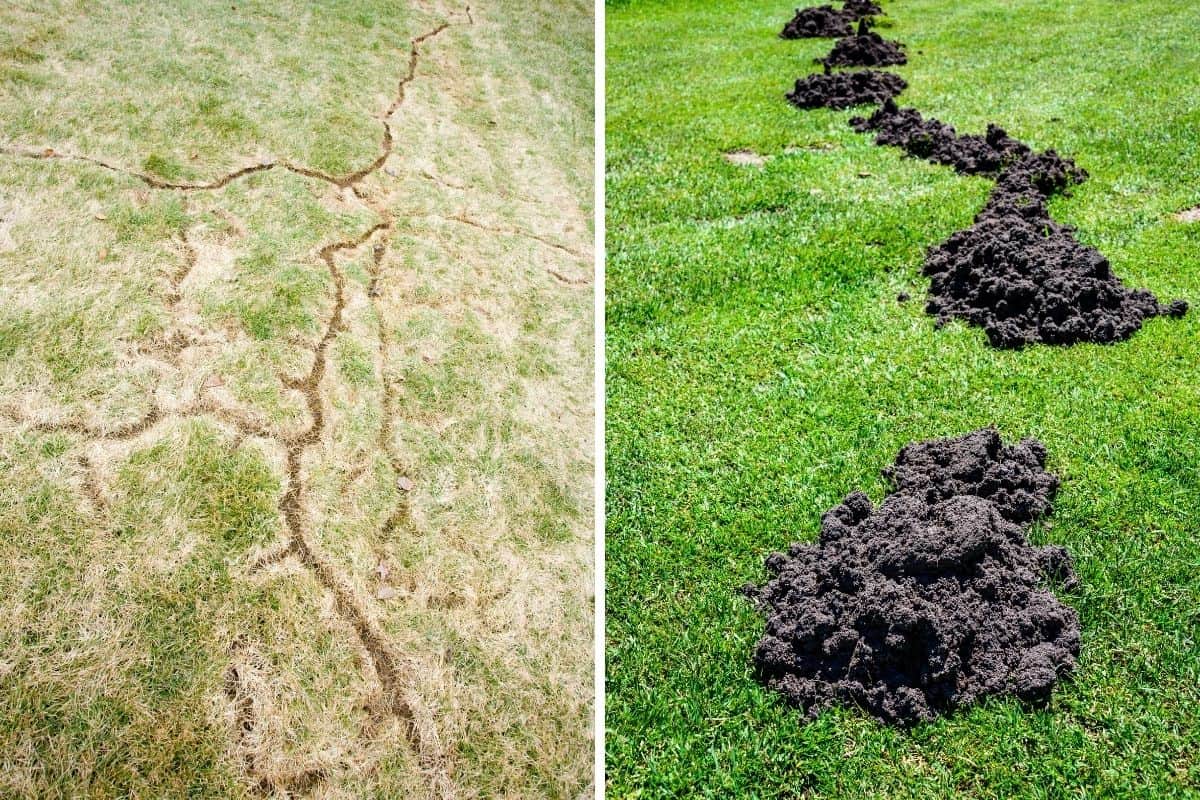
How To Control Moles
Moles are solitary creatures, living in seclusion in their underground burrows for most of the year. Because they cover a large area in search of food, no more than three to five moles will typically live within one acre. This is good news for anyone struggling with mole problems, as you likely only have a couple to deal with.
Sometimes the moles come in because they are looking for a good food source. Moles don’t eat your vegetable garden. It’s the surface tunnels and underground tunnels they create that cause the damage. Mole tunnels can disrupt the root system of your vegetables, causing them to die. And that’s what makes the mole a garden pest. Finding out what’s bringing them in in the first place is one way to find the best solution.
Below are a few methods for effectively ridding your garden of moles.
1. Apply repellents
According to PennState Extension, no registered chemical mole repellents are on the market. However, several natural products have shown effectiveness in repelling moles. You can create a DIY solution by diluting six ounces of pure castor oil in a gallon of water with two tablespoons of natural liquid soap and spraying it on the soil. Or you can purchase a ready-made castor oil product like organic Holy Moley. Repellents containing Fuller’s earth are also popular.
Mole-repelling devices that vibrate or produce sound have varying degrees of effectiveness. While some people swear by them, others swear they don’t work. These devices work best in a small area, as they have a limited range.
Some other repellents you might consider are strong scents like red pepper or cayenne pepper. Natural mole repellents are also safer for the environment. Some people also swear by coffee grounds. It would be best if you avoided moth balls because they can cause other harm to the environment. But let’s look at other methods besides liquid repellents and strong smells.
2. Bury a fence
Speaking of small areas, a physical barrier is an excellent way to keep moles out of a flower bed or other small space. Dig a trench one foot deep and wide around the area you want to protect. Then bend 24-inch-wide hardware cloth or sheet metal lengthwise at a right angle and place it in the bottom of the trench. One side should lay flat against the bottom and the other should rest vertically against the area you want to protect. In other words, the L shape faces outward. Refill the trench with soil or gravel.
Some people use wire mesh to make their underground fences, which can stop the moles from creating underground tunnels. It has proven a very effective method of keeping moles out of the garden. Your local hardware store will have the supplies needed to help you do this. Some call it the barrier method and the general idea is to make a barrier that keeps the moles out.
3. Set a trap
But what if the moles have already gotten in? Consider a mole trap for your mole problem! Most experts agree that trapping is the most effective way to rid your outdoor space of moles. Specialized mole traps may look dangerous, but a quick death is the most humane, and these traps pose little danger to adult humans when adequately handled.
Once you have acquired a trap, you must identify an active mole tunnel. To do this, simply step on a section of the tunnel to compress the soil. An active runway will be raised again within 24 hours. Then follow the instructions on the packaging to set the trap, and check on it at least once daily. If you can locate the mole activity, you can trap it quickly. Place the traps near an active tunnel, and then wait.
Humane traps are the best way to go when looking for solid pest control. A mole invasion can do a lot of damage to your vegetable garden and traps are one way to prevent this. Live traps are another option you can consider and these are humane and easy to use.
4. Plant mole-deterring plants
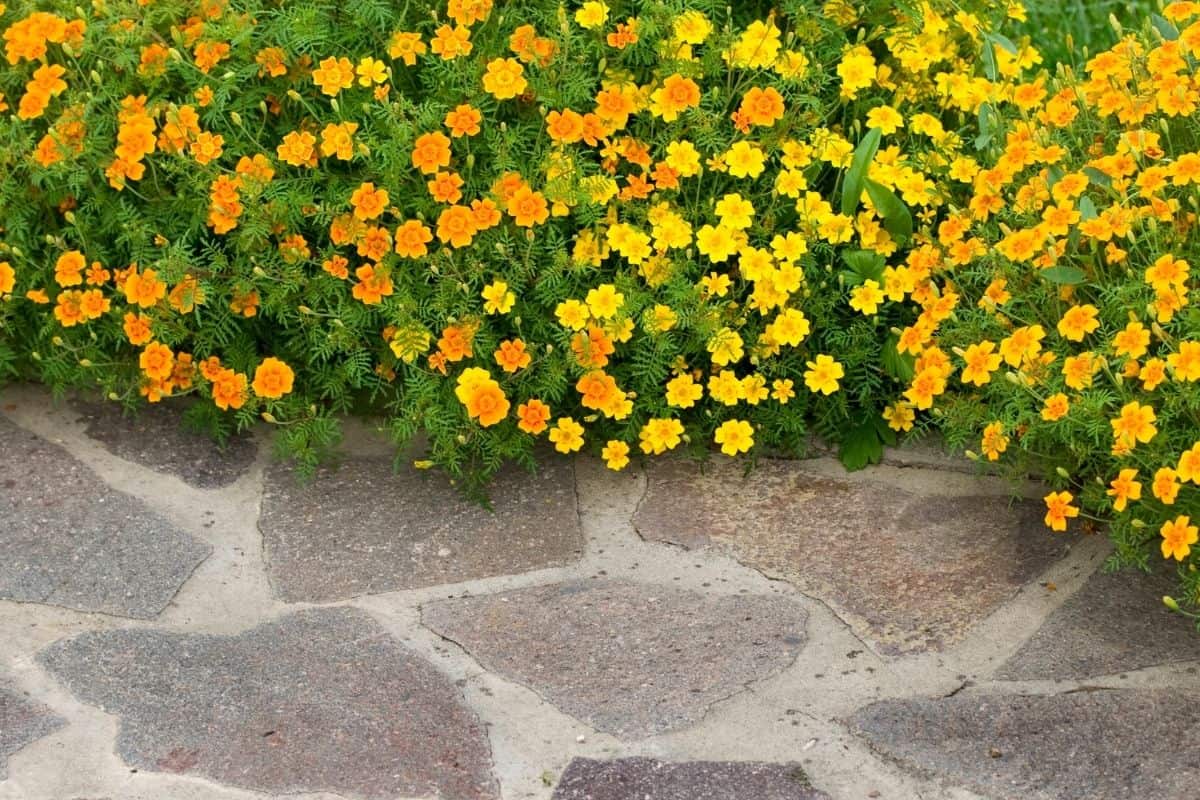
Consider these beautiful, natural deterrents when you’re looking for humane ways of keeping moles out of your garden. A border of marigolds around the garden not only can help control insect pests but also might deter moles! Other plants that moles dislike include daffodils, caper spurge (also fittingly called “mole plant”), and castor bean. Use caution with the latter two plants, as caper spurge and castor beans are poisonous to humans and pets and can become problematic weeds if they escape cultivation. If you have curious pets or young children, you may want to stick with marigolds and daffodils.
Although rodent problems in the garden usually stem from voles, mice, or chipmunks, moles can sometimes cause havoc simply by tunneling. Chances are, any mole “infestation” you have involves only a handful of moles, which makes your job of controlling them a little easier. Ensure you’ve correctly identified the pest, then try one or more of the control methods above to rid your garden of moles.
And if you find out your tunnels are not moles, you might have shrews. Learn how to identify shrews.
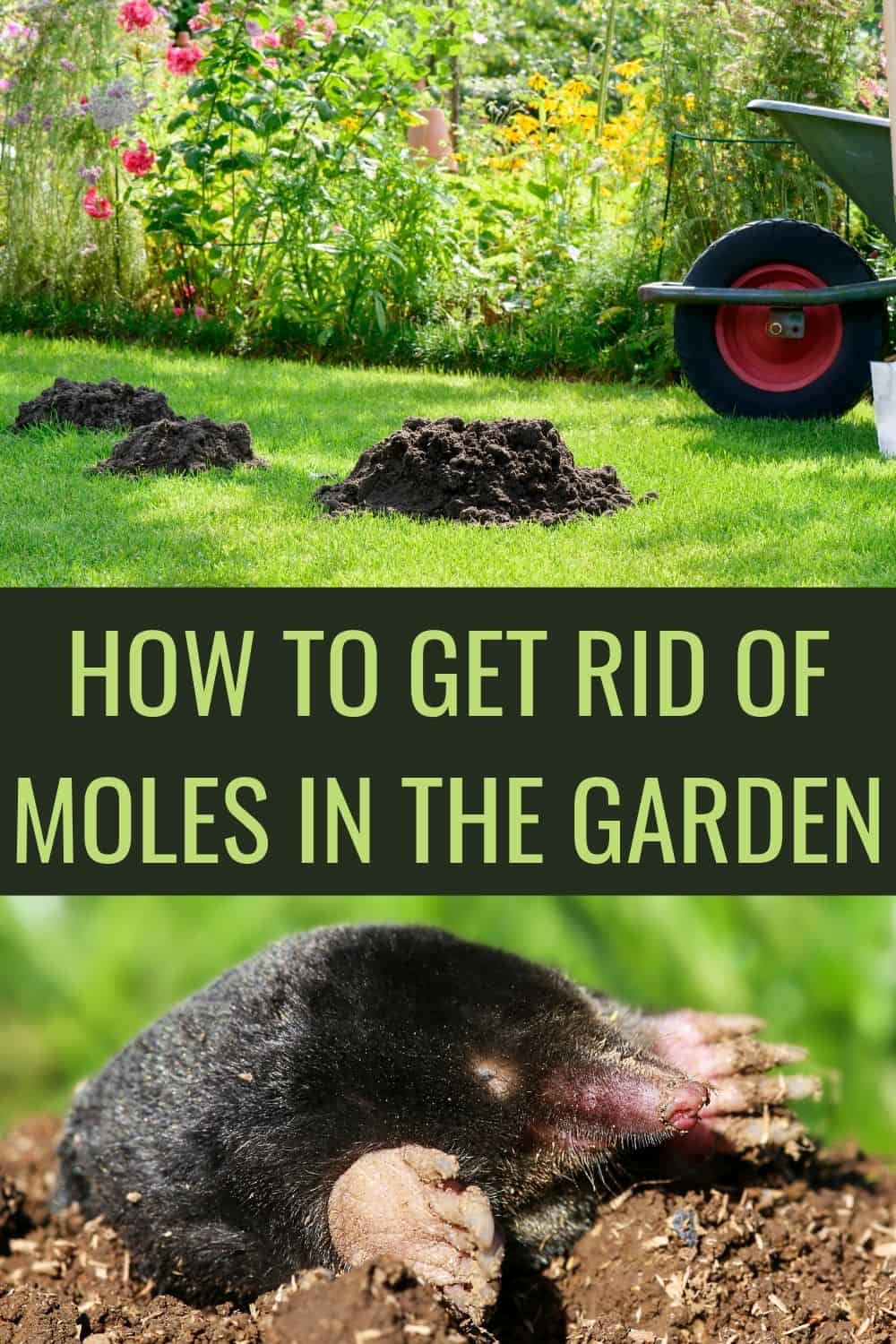



How To Get Rid Of Shrews In The Yard: 4 Great Tips
Thursday 6th of July 2023
[…] tips for getting rid of moles […]
Thomas Caron
Thursday 18th of May 2023
By applying biological Milky Spore to the area you can naturally reduce the grub population (Japanese Beatles) and others, reducing the mole food source.
Gary Green
Monday 1st of May 2023
After trying a lot of different methods I’ve found the only thing that works is applying grub worm killer. Gets rid of their food source and the moles are gone within a few days
9 Common Lavender Problems And How To Solve Them
Thursday 12th of January 2023
[…] Moles may damage lavender plants by tunneling under and uprooting them, but moles typically eat insects rather than plants. Look for circular, volcano-shaped soil mounds, often connected by runways visible as raised ridges. Here’s how to get rid of moles. […]
How To Get Rid Of Japanese Beetles And Save Your Garden
Tuesday 2nd of August 2022
[…] nematodes…just spray the yard and they kill the grubs…no more moles or fleas […]